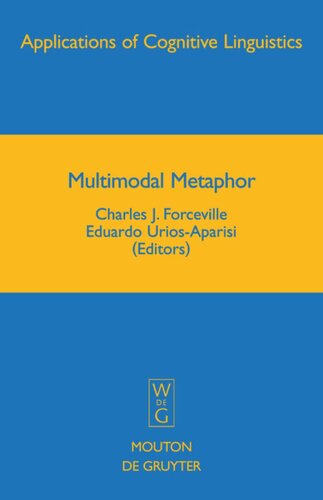

Most ebook files are in PDF format, so you can easily read them using various software such as Foxit Reader or directly on the Google Chrome browser.
Some ebook files are released by publishers in other formats such as .awz, .mobi, .epub, .fb2, etc. You may need to install specific software to read these formats on mobile/PC, such as Calibre.
Please read the tutorial at this link: https://ebookbell.com/faq
We offer FREE conversion to the popular formats you request; however, this may take some time. Therefore, right after payment, please email us, and we will try to provide the service as quickly as possible.
For some exceptional file formats or broken links (if any), please refrain from opening any disputes. Instead, email us first, and we will try to assist within a maximum of 6 hours.
EbookBell Team

4.3
68 reviews"Metaphor studies" has over the past 30 years become a discipline in its own right, mainly because of the cognitive linguistic claim that metaphors characterize thought, not just language. But most metaphor scholars hitherto focus exclusively on its purely verbal expressions. Since both persuasive and narrative discourses in contemporary society increasingly draw on modalities other than language alone, sustained research into a broader range of manifestations of metaphor is imperative.
This volume is the first book-length study to investigate multimodal occurrences of metaphor, and is of interest to scholars interested in metaphor as well as in multimodal discourse. Each chapter investigates metaphors whose identification and interpretation depend on the co-presence of at least two of the following modalities: language, visuals, gestures, sound, music. On the basis of case studies in a variety of discourse genres (advertising, cartoons, films, comics, conversation, music, amply represented in photographs, logos, drawings, film stills, and musical scores), the contributors demonstrate that, and how, metaphor can occur multimodally, providing ideas and methodological angles enabling further theorizing and testing in this rapidly expanding field. Covering creative as well as conceptual metaphors, and where appropriate evaluating cultural factors governing metaphor interpretation, the contributors provide a wealth of material for studying the conceptual and rhetorical force of metaphor in contemporary society.